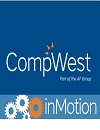Severe Weather and Emergency Preparedness | September 2023
Search the Library

Emergency Action Plans: Why You Need One
No matter the situation, every workplace should have a written emergency action plan (EAP) that outlines processes for monitoring and responding to changing conditions and communicating with employees. One way to keep workers safe is through an ongoing dedication to emergency action planning. Use the guide provided below to start or revise your plan today.
Prepare Your Workforce for Pop-Up Weather — On and Off Duty
While spring and summer are traditionally viewed as peak seasons for severe weather, severe storms can develop at any time of the year — including hurricanes, as witnessed by recent events on the southwest coast.
Whether it’s a thunderstorm accompanied by tornadoes and lightning, or tropical storms and hurricanes that bring heavy rainfall and destructive winds, severe weather can strike anywhere. Severe weather also creates varying degrees of unsafe conditions including driving.
Staying safe in a storm means preparing your organization and your employees for them before they happen.
Get Ready to ShakeOut for Earthquake Preparedness Day — Oct. 19
Throughout the day on Oct. 19, businesses and residents are encouraged to practice earthquake preparedness measures.
Implement or reevaluate these strategies to ensure the safety of employees and customers and maintain business as usual after a disaster.
-
Secure — Identify earthquake hazards and secure moveable items.
-
Plan — Develop a disaster plan and determine communication procedures in the event of an emergency.
-
Organize — Maintain disaster supplies in safe, accessible and known locations.
-
Minimize — Reduce financial consequences by making appropriate property improvements and storing important documents in protected locations.
Food for Thought Learning Series — Slip, Trip and Fall Prevention
Loss and claim prevention are an ongoing effort. That’s why we’d like to invite you to an upcoming eLearning session conducted by our Agency Education team. It’s often the assumed avoidable losses that occur the most. Take slips, trips and falls, for example. The most minor spills can result in an injury and subsequent claim that leads to an increased premium, time away from work for the injured worker and other repercussions.
AF Group Featured as Thought Leaders in Recent NCCI Article
Workers’ compensation is no exception to the integration of technology in our daily lives. This article examines the role that artificial intelligence and predictive analytics plays in impacting various aspects of injury prevention in the workplace.
Additional Resources
- Basic Disaster Supply Checklist
- Center for Disease Control — Natural Disasters and Severe Weather Hub
New Loss Control Resources
Download resource:
View PDFShare this resource:
URL coppied to clipboard.
Or send it directly to someone via our email form:

